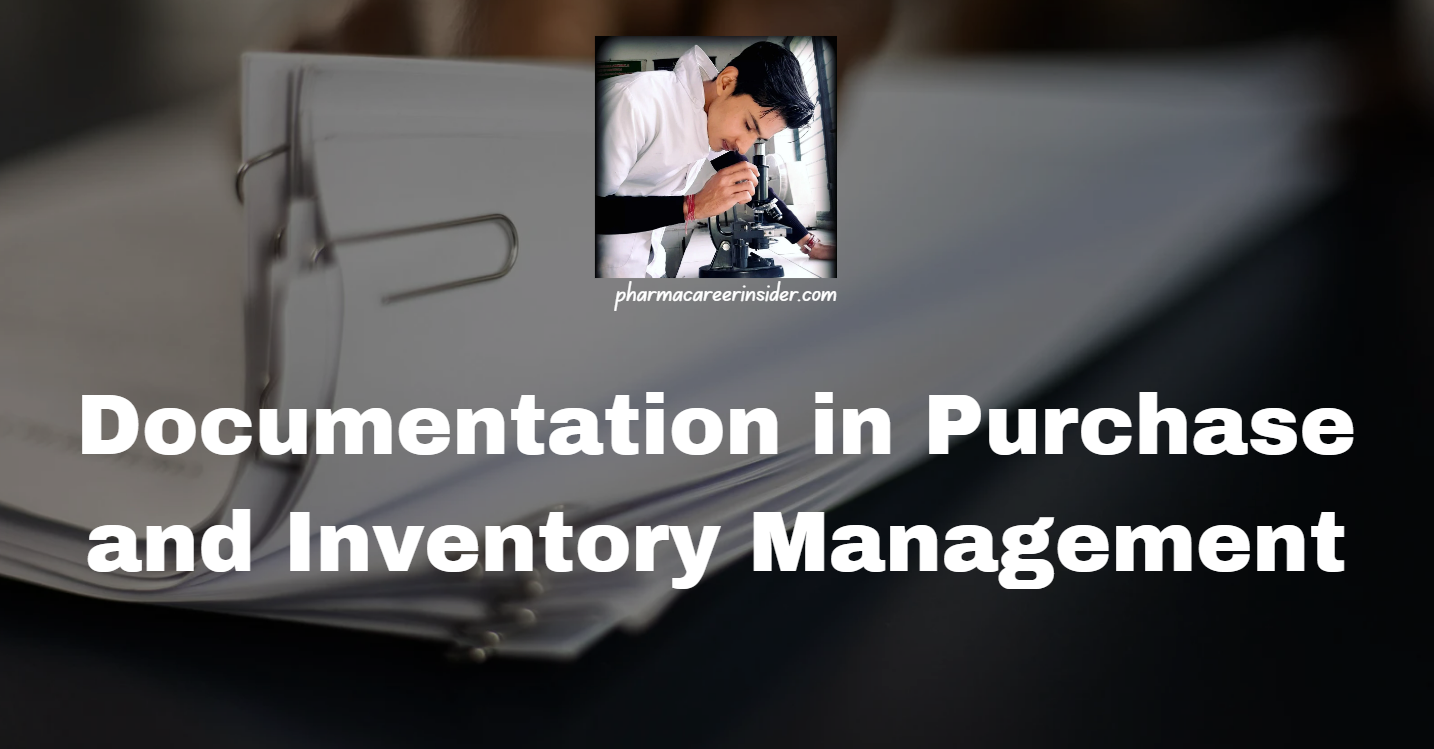Efficient and accurate documentation is crucial in the fields of purchase and inventory management, contributing to regulatory compliance, financial accountability, and overall operational transparency. This detailed note covers various aspects of documentation in the purchase and inventory management processes.
Documentation in Purchase Management
1. Purchase Requisition
Definition: A formal request initiated by a department or user to the purchasing department for the procurement of goods or services.
Details:
Identify the requester, department, and purpose of the purchase.
Specify the quantity, specifications, and any special requirements.
Attach supporting documents, if applicable.
2. Purchase Order (PO)
Definition: A legally binding document issued by a buyer to a seller, indicating the type, quantity, and agreed-upon price for products or services.
Details:
Vendor information, including name, address, and contact details.
Item details, including description, quantity, unit price, and total cost.
Terms and conditions, such as payment terms and delivery schedule.
3. Goods Received Note (GRN)
Definition: A document used to confirm the receipt of goods, verifying that the quantity and quality match the purchase order.
Details:
Date and time of receipt.
Quantity received and any discrepancies noted.
Inspection results and any visible damage.
4. Invoice
Definition: A bill sent by the seller to the buyer, indicating the products or services provided and the amount due.
Details:
Invoice number, date, and due date.
Itemized list of products or services with quantities and prices.
Terms of payment and any applicable discounts.
5. Payment Documentation
Details:
Record of payments made, including check numbers, transaction dates, and amounts.
Correspondence with the vendor regarding payment.
6. Vendor Performance Evaluation
Details:
Assessment of vendor performance in terms of product quality, delivery time, and adherence to agreements.
Any issues or discrepancies noted during the procurement process.
Documentation in Inventory Management
1. Stock Receipt:
Details:
Date and time of receiving stock.
Quantity received and matching it with the GRN.
Condition of the received items.
2. Stock Issue:
Details:
Date and time of issuing stock.
Quantity issued and the purpose of the issuance.
Authorized personnel involved in the transaction.
3. Stock Transfer:
Details:
Date and time of transfer.
Quantities transferred and the locations involved.
Reason for the transfer (e.g., redistribution, relocation).
4. Stock Adjustment:
Details:
Reason for the adjustment (e.g., damaged items, discrepancies).
Quantity adjusted and any necessary corrections to stock levels.
Authorization for the adjustment.
5. Cycle Counts and Physical Inventory:
Details:
Date and time of the count.
Quantity counted and any discrepancies.
Any observations or reasons for discrepancies.
6. Expiry and Obsolete Stock Records:
Details:
Identification of expired or obsolete items.
Date of identification and decision-making regarding disposal.
Proper disposal documentation.
7. Stock Valuation:
Details:
Method used for stock valuation (e.g., FIFO, LIFO).
Valuation date and associated costs (e.g., purchase cost, additional expenses).
8. Stock Status Reports:
Details:
Periodic reports on stock levels, including quantities on hand, in transit, and on order.
Comparison of current stock levels with established benchmarks.
Importance of Documentation in Purchase and Inventory Management
1. Regulatory Compliance:
Ensures adherence to industry regulations and standards governing procurement, financial reporting, and inventory control.
2. Financial Accountability:
Facilitates accurate tracking of expenditures, ensuring transparency in financial transactions and aiding in budgeting.
3. Risk Mitigation:
Provides a trail of documentation that helps in identifying and addressing potential risks, such as discrepancies, errors, or non-compliance.
4. Operational Efficiency:
Streamlines processes by providing a systematic and organized approach to managing purchases and inventory, reducing the likelihood of errors.
5. Auditing and Accountability:
Simplifies internal and external audits by providing a comprehensive record of transactions and decisions, aiding in accountability measures.
6. Decision-Making Support:
Serves as a valuable source of information for decision-makers, enabling informed choices regarding procurement strategies, vendor selection, and inventory optimization.
7. Continuous Improvement:
Supports continuous improvement initiatives by providing data for performance evaluations, identifying areas for enhancement, and ensuring accountability for corrective actions.
Best Practices for Effective Documentation
1. Standardized Templates:
Use standardized templates for documents like purchase orders, invoices, and stock receipts to maintain consistency.
2. Electronic Document Management Systems (EDMS):
Implement EDMS to facilitate digital storage, retrieval, and tracking of documents, improving accessibility and reducing the risk of physical document loss.
3. Regular Training Programs:
Conduct regular training programs for personnel involved in purchase and inventory management to ensure a consistent understanding of documentation protocols.
4. Cross-Functional Collaboration:
Foster collaboration between purchasing, finance, and inventory management teams to ensure seamless documentation flow and data accuracy.
5. Data Security Measures:
Implement data security measures, including access controls and encryption, to safeguard sensitive information in documents.
6. Periodic Audits and Reviews:
Conduct periodic audits and reviews of documentation processes to identify areas for improvement and ensure ongoing compliance.
Documentation in purchase and inventory management is a fundamental aspect of organizational efficiency, accountability, and compliance. Implementing standardized processes, utilizing technology, and emphasizing training and collaboration contribute to effective documentation practices. A well-maintained documentation system not only ensures regulatory adherence but also serves as a valuable tool for decision-making, risk mitigation, and continuous improvement within the organization.

